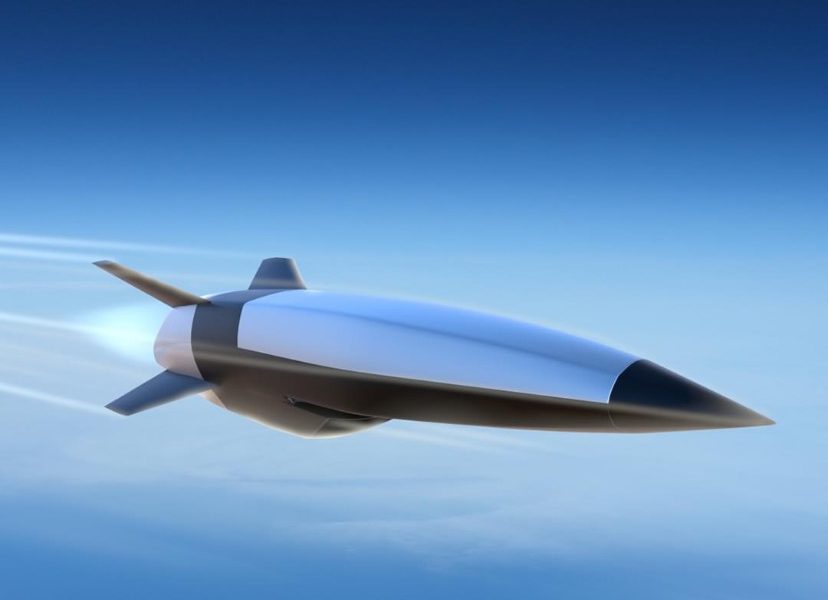After more than 15 years of collaboration, the U.S. and Australia are now gaining ground in perfecting a new air-breathing cruise missile traveling five times the speed of sound that will be launched from a fighter aircraft. This hypersonic munition is designed to target high-value, time-sensitive objectives, with the Pentagon seeking to close the gap on China and Russia’s technology development.
“We’re … working collaboratively on cutting edge hypersonic technologies that will provide critical advantage to the warfighter,” a senior defense official told reporters at the Pentagon on Aug 5. “Australia and the U.S. are making significant progress in design and ground testing to develop an air-launched hypersonic weapon under the Southern Cross integrated flight research experiment, or SCIFiRE.”
The two countries agreed to collaborate on hypersonic research in 2007, kicking off the Hypersonic International Flight Research Experimentation (HIFiRE) program. By 2020, the program evolved into SCIFiRE, focusing on advancing the new air-breathing system. This new weapon is poised to have a “Mach 5-class precision strike missile powered by scramjet engine.”
Scramjet, a type of air-breathing engine that uses oxygen from air to burn fuel, represents a “significant leap” for hypersonic weapons, John Venable, senior resident fellow at the Mitchell Institute for Aerospace Studies, said. The missile’s Mach 5 speed makes it much harder for air defenses to intercept due to the reduced response time.
“Anybody can hit a fastball if they know it’s coming; the problem arises when you don’t know it’s coming,” Venable told Air & Space Forces Magazine. “That’s the great gift of this scramjet cruise missile—the speed. At Mach 5, or 50 miles a minute, a missile launched from 25 miles away gives you less than 30 seconds to detect and intercept it, and that’s pretty heady expectations.”
The U.S. Air Force was previously developing hypersonic missiles under two programs: the AGM-183 Air-Launched Rapid Response Weapon (ARRW) and the Hypersonic Attack Cruise Missile (HACM). Due to inconsistent test results, the ARRW program was scrapped last year, and the focus is now solely on HACM. This shift adds weight to the current U.S.-Australia partnership, as HACM collaborates with SCIFiRE for flight testing.
“Looking forward, the U.S. and Australia are working towards expanding this deep collaboration and transitioning the partnership on SCIFiRE and HACM to a fielded combat capability,” noted the joint statement of the two countries’ ministerial consultations on Aug 6. “Australia will consider HACM as a potential pathway to field its first air-launched hypersonic weapon.”
A Government Accountability Office report from June revealed that several of HACM’s planned missile tests will be held in Australia, using the country’s F/A-18 Hornets. The Pentagon has previously struggled to find hypersonic test ranges due to limited airspace and unexpected aircraft or ships appearing in the range.
“For air testing, you need a vast expanse of airspace, either over water or land, that allows you to conduct tests when and where you need to,” said Venable. “Australia has that space, and many of their ranges are over land. That alone is a major reason for wanting to develop this program in collaboration with Australia, the ability for us to use their facilities.”
The munitions will be launched from fighters such as the F-35A Lightning II, EA-18G Growler, and P-8A Poseidon, according to the Royal Australian Air Force. Venable, a long-time fighter pilot with 25 years in the USAF, added that the F-15E, F-15EX, and F-16 should also be capable of firing these missiles.
These high-speed, highly maneuverable air-breathing weapons can achieve longer ranges compared to traditional rocket-based systems, which carry both fuel and oxidizer. China And Russia are known to be “well ahead” of this scramjet technology, almost across the board.
“We were ahead of the world around 2010, but funding cuts stalled our progress for nearly a decade,” said Venable. “During that time, China and Russia made some significant advancements on the technology development.”
Despite the countries’ recent progress, though, there is currently no evidence that they have fielded the scramjet capabilities yet.
With the U.S. and Australia’s partnership, the Pentagon now expects to begin fielding munitions starting in fiscal 2027. Once Australia is also equipped, the two allies’ closest partners, including the U.K., Canada, and New Zealand, could be expected to purchase them.
“I would imagine that once this is developed, the Five Eyes nations will probably have access to it and may acquire it in the future,” said Venable. “But because it’s such high-end technology, it will be closely held, and will be kept under tighter control from other nations.”


